Home » Jazz Articles » Interview » Jon Hassell: Words with the Shaman
Jon Hassell: Words with the Shaman

The more the technology becomes invisible, the better it is. Musically, I don't think there's anything to be eschewed—if it sounds good it's open season. On the other hand, you can carry the electronic thing too far. We are too deep now into being digitized ourselves.
—Jon Hassell
In March 2020, Hassell reissued Vernal Equinox on his own Ndeya Records label.
Hassell's roots go back to the early days of modern minimalism in the US. After studying with Karlheinz Stockhausen at the Centre for New Music in Cologne, Germany in the mid 1960s, Memphis-born Hassell returned to the US, where he based himself in New York and fell in with fellow experimentalists Terry Riley and La Monte Young. He played on the first recording of Riley's In C (Columbia) in 1968, and toured and recorded with Young's Theatre Of Eternal Music collective.
In 1972, on a European tour with Young, Hassell heard the Indian singer Pandit Pran Nath, who was performing on the same concert programme in Rome. Encountering Nath's microtonal kirani style was a profound, life-changing experience for Hassell and he persuaded Young and Riley to join him on an extended trip to India to study with the singer.
Hassell's unique, transcultural approach to the trumpet—breathy, allusive, raga-like, microtone-inflected, half sung and half blown—developed out of these studies. In the four decades since Vernal Equinox was first released he has not fundamentally changed his aesthetic, simply refined, and on occasion augmented it, as developments in audio technology and in his own artistry have opened up new possibilities.
In this interview, Hassell talks about the processes and inspirations involved in making his music. The interview is followed by an introduction to that music over nine albums and one EP released between 1974 and 2018, from an early album with La Monte Young through to his own most recently recorded release, Listening To Pictures: Pentimento Volume One (Ndeya, 2018).
All About Jazz: When Pran Nath accelerated your thinking about Fourth World music, "exotic" music required time and effort to access. Today, music from everywhere is available with a couple of clicks on a smartphone. Does the Fourth World concept still mean something?
Jon Hassell: It will become meaningless if it becomes a cliché, but I don't think it has reached that point yet. To me, Fourth World is still a useful description. It conveys the idea of the best of this world and the best of that world, the idea of not simply championing one side over the other, the idea that they're equal—though I can easily launch into some championing of the south in the north/south economic and cultural-divide debate. I can definitely champion the south side more readily than I can champion the north side.
AAJ: You have long been ahead of the curve there. How about exotica composers such as Les Baxter and Martin Denny in the 1950s? Would you agree that they were also early exemplars of outward-looking music making?
JH: I was aware of exotica when I was starting out and I loved it. I still love it. I did a couple of things in that direction and I've always enjoyed Les Baxter. When I was young, that was what was available in world music terms. The snaky cobra-woman kind of vibe or the Tarzan movies that had jungly music, albeit written by exiled European composers. It's been a big love of mine ever since. Those arrangements that Les Baxter did for Yma Sumac, those are incredible.
AAJ: How important has advancing technology been in enabling your music? Do you think you would have continued in the same direction if the world had stayed analogue?
JH: It's always a matter of working with whatever tools are available at the time. Technology has opened up possibilities for me from the start. When I started learning to play raga on the trumpet—trying to sway, trying to play the curves—I started thinking to myself, the trumpet's a lonely instrument so why don't I add another trumpeter? And the harmoniser allowed me to do that. The realisation that through technology you could make a monophonic instrument into a polyphonic instrument, so to speak, was wonderful. And the more the technology becomes invisible, the better it is. But we don't ever want to lose the joy of hearing a string vibrate up close, or lose any traditional instrument that you might find in a so-called unsophisticated culture. The raw sound of Pygmy music, for instance, or imitating bird calls and so on. These are joyful things.
AAJ: Do you think modern technology presents any sort of threat to music? Generative music's algorithm bypass of a human compass, for instance?
JH: Musically, I don't think there's anything to be eschewed, to be denied—if it sounds good it's open season. I was thinking about Stockhausen recently and what first attracted me to his music. The first piece that drew me to him was "Gesang der Jünglinge," which was electronically assembled in a radio studio in 1955. It was made à la musique concrète, using samples of a choir boy's voice. The whole structure was in an atonal mode and was done in such a way that the voice came out like sine tones. But it was made in such a very warm, humanised fashion. On the other hand, you can carry the electronic thing too far. We are too deep now into being digitized ourselves. We're being formatted, being asked to accept only things which are made for us to imbibe by, say, Google. On that level technology has taken over. We're simply puppets.
AAJ: Are you working on any new tech yourself?
JH: Oh certainly. I've got notes on ideas that are really extensions of things that exist already. I have an idea for a certain kind of harmoniser which is not just something that replicates the input. It would be much more refined than that. But I'd better not say too much about it or someone else will do it first!
AAJ: Pentimento is an elegant metaphor with which to describe the process of making of your recent album, Listening To Pictures: Pentimento Volume One . But you were essentially using the same technique on much earlier albums. Is it the metaphor that is new rather than the process?
JH: It is more the metaphor that is new, yes. But I thought the idea of pentimento—of a painting or a fresco with something that was done before showing through—was an attractive metaphor to describe the starting point of something new. And a metaphor can change the way you think about things. Making the album, I was doing a lot of manipulation of sounds. When I'm in the studio and using 24 tracks, and using the software that's available these days, there is this gigantic library of sounds. That's really where the idea of pentimento caught fire in my imagination. I thought, what else is 24-track recording except pentimento? Layers are scratched off and other layers show through—or you can have a temporal pentimento à la Natalie Cole and Nat King Cole, like in 1991 when Natalie sang a virtual duet with her late father on his 1951 hit "Unforgettable."
AAJ: The album's sleeve uses pentimento in the traditional art-world meaning of the word.
JH: It's a pentimento of near and far in terms of both time and space. That's the Nile she's holding on to. It goes between her legs in the uncropped version. The Nile and those geometric surfaces are actually the satellite shot on the cover of Fourth World Volume One. The girl is the cover of a Hindu pulp-romance magazine that I brought back from India when I was studying raga with Pran Nath in the 1970s. The view through venetian blinds is of plants outside my bedroom window.
AAJ: Your friendship with Mati Klarwein [the German artist who created the cover of Miles Davis' 1970 Columbia album Bitches Brew] inspired the name of your new record label, Ndeya, which borrows from the name of the village where Klarwein lived in Majorca. Did it make any direct input into Listening To Pictures?
JH: Flocks of goats roamed in the hills near Mati's house, each one with a slightly different neck bell. One balmy summer midnight in 1995 when I was staying there, I stayed awake to record the floating, constantly changing "gamelan" that enters in the distant background of the track "Pastorale Vassant." When I was asked to say something about the piece recently, I listened again and, sure enough, Twittering Machine, the title of a Paul Klee painting, popped into my mind. Although I knew his work for years and his Pedagogical Sketchbook was in my library, the "twittering " title was what stuck to me and I had only a vague memory of the painting. But when I looked at the painting while listening I was amazed at how they reflected off one another in a kind of unintended "tone painting" way, where the picture sounds like the music and vice versa.
AAJ: The album's subtitle is Pentimento Volume One. Is the next volume in the can?
JH: Almost. We had over an hour's worth of music and somebody had the idea, we're in a world of shortened attention spans, so why don't we break it up into two? I'm still doing adjustments to what will be in the second volume. I'm responding to the first volume and thinking what I would like to hear next, what would represent an extension and/or a continuation of it.
AN INTRODUCTION TO JON HASSELL IN 10 DISCS
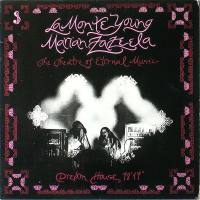 La Monte Young, Marian Zazeela & The Theatre Of Eternal Music
La Monte Young, Marian Zazeela & The Theatre Of Eternal Music Dream House 78'17"
Shandar, 1974
Hassell's minimalist period is documented on two historic albums—Terry Riley's first recording of his seminal composition In C, which also included Hassell's wife on piano, and La Monte Young's Dream House 78'17". Young performs one side on his own, using custom-built oscillators to create hypnotic sine-wave drones. On the other side he is joined by Hassell on trumpet, Marian Zazeela on voice and Garrett List on trombone. Wonderfully, intensely immersive stuff.
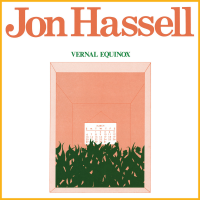 Jon Hassell
Jon Hassell Vernal Equinox
Lovely, 1977
Hassell's roadmap for four decades of Fourth World exploration is a pioneering blend of electronics and non-Western ingredients. He is accompanied by percussionist Nana Vasconcelos and lead synthesizer-player David Rosenboom (who had played viola on the 1968 recording of Riley's In C). In 1976, when most of Vernal Equinox was recorded, synthesizers were far from standard studio equipment, and so most of the album was recorded at Toronto's York University, where Rosenboom was the director of the well-equipped Electronic Media Studios and Laboratory of Experimental Aesthetics. A perfectly realised manifesto.
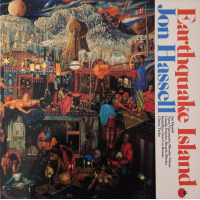 Jon Hassell
Jon Hassell Earthquake Island
Tomato, 1978
Earthquake Island is perhaps the most conventional album Hassell has released under his own name—though with Hassell, "conventional" is a relative term. The sound approximates a mid-1970s Miles Davis album, but is less dense and lacks as many dark corners. The band includes tabla player Badal Roy from Davis' group and bassist Miroslav Vitous and drummer Dom Um Romao from Weather Report. Sandwiched as it is between more overtly experimental albums, Earthquake Island tends to get overlooked, but unfairly. If you are in the mood for some jazz-rock with your Fourth World, it hits the spot.
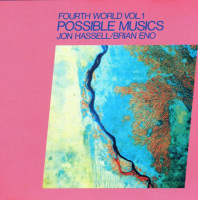 Jon Hassell / Brian Eno
Jon Hassell / Brian Eno Fourth World Vol. 1: Possible Musics
Editions EG, 1980
Hassell and Eno were a studio partnership made in heaven and this is the first of two back-to-back collaborations of flawless beauty. The atmosphere owes something to the studio techniques developed on Eno's Ambient 1: Music For Airports (Edition EG, 1978), but more to the transculturalism of Vernal Equinox, and it was not by accident that Hassell's name was first up on the front cover. "Charm (Over Burundi Cloud)," which takes up all of side two—with Vaconcelos joined by second percussionist Aiyb Dieng and Eno replacing Rosenboom on synthesizers—is particularly effective. Even the best partnerships, however, can run into difficulties....
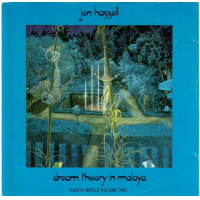 Jon Hassell
Jon Hassell Dream Theory In Malaya: Fourth World Volume Two
Editions EG, 1981
Possible Musics was a succès d'estime for which most of the acclaim accrued to Eno rather than its little-known primary creator. As Eno embarked on high-profile, Fourth World-inspired collaborations with other musicians, beginning with David Byrne's My Life In The Bush Of Ghosts (Sire, 1981), Hassell began to feel that a wholesale expropriation of his ideas was going on. He has said that he reached a tipping point when he came across Possible Musics racked under "Brian Eno" in a New York record store. So while Eno contributed to Dream Theory In Malaya as mixer and musician, his name does not appear on the front cover and the sleeve credits unambiguously state, "All compositions by Jon Hassell. Produced by Jon Hassell."
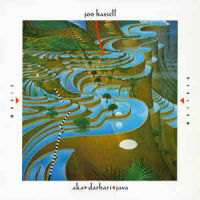 Jon Hassell
Jon Hassell Aka-Darbari-Java: Magic Realism
Editions EG, 1983
Parting company with Eno—temporarily as it turned out—Hassell co-produced Magic Realism with Daniel Lanois, who had engineered Dream Theory . Hassell's liner notes describe the new album as the blueprint for a "coffee-coloured classical music of the future," in which the "allowable" musical vocabulary is expanded to include influences from beyond the European tradition, creating "serious music" with "transcultural appeal and a smile"—a precise definition of Fourth World. Hindustani raga, Senegalese ritual drum-music, Central African Pygmy songs and faux-gamelan Balinese soundscapes are luminously reimagined by Hassell and his sole accompanist, percussionist Abdou Mboup.
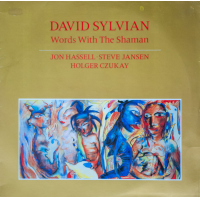 David Sylvian
David Sylvian Words With The Shaman
Virgin, 1986
Another relatively conventional outing for Hassell, the EP Words With The Shaman replaces the jazz-rock of Earthquake Island with European avant-rock. The musicians are ex-Japan vocalist Sylvian on synthesizers and guitars, Hassell on trumpet, Can bassist Holger Czukay on radio and dictaphone, Percy Jones, from guitarist Bill Frisell's band, on bass guitar and Japan's Steve Jansen on drums. A three-piece suite composed by Sylvian and Hassell, the music grew out of fragments from Sylvian's 1984 album Brilliant Trees (Virgin), for which Hassell wrote the title tune and guested on two tracks. On its own terms, a miniature masterpiece.
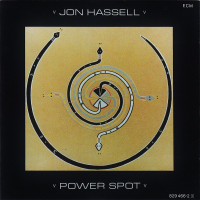 Jon Hassell
Jon Hassell Power Spot
ECM, 1986
Hassell's irritation with the way Eno had been cast as the inventor of the Fourth World concept did not extend to Eno personally—or if it did, it was short-lived. The partnership resumed with Power Spot, which Eno co-produced with Lanois. The mood switches between an uncomplicated propulsive drive and the dreamier, more asymmetrical approach more typically associated with Hassell.
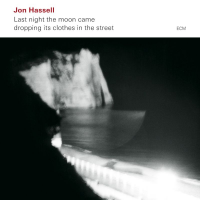 Jon Hassell
Jon Hassell Last Night The Moon Came Dropping Its Clothes In The Street
ECM, 2009
Hassell's second ECM Records album, a double, augments his Maarifa Street touring band with some of the electronicists and beyond-jazz stylists with whom he had collaborated on several occasions at Norway's Punkt festival. The stellar line-up includes live sampler Jan Bang, guitarist Eivind Aarset, percussionist Helge Norbakken, bassist Peter Freeman and Was (Not Was) keyboard player Jamie Muhoberac. As breathtakingly inventive as Vernal Equinox was some 30 years earlier.
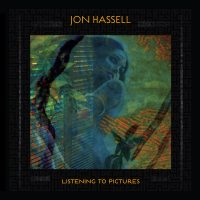 Jon Hassell
Jon Hassell Listening To Pictures: Pentimento Volume One
Ndeya, 2018
By the time even the most revolutionary musicians reach their ninth decade, few are any longer making profoundly adventurous work. But on Listening To Pictures, Hassell is as venturesome as ever. It is as ahead of the curve as anything he has previously recorded. The "exotic" cultural focus of his early albums has been replaced by a more syncretic approach in which the idea of "otherness" has become irrelevant. Above all, advances in recording technology have enabled more sophisticated sonics. Hassell calls the process behind the creation of his new album "pentimento." The term, borrowed from art scholarship, means that fragments of found sounds or previous performances are sampled and manipulated into new contexts and unexpected forms. Shape-shifting is what Hassell has always done, of course, but on Listening To Pictures he has taken the practice to a new level.
Photo: JM Lubrano
< Previous
Pigfoot Shuffle
Next >
Still Time to Quit
Comments
Tags
Interviews
Jon Hassell
Chris May
Brian Eno
Karlheinz Stockhausen
Terry Riley
La Monte Young
Les Baxter
Martin Denny
Nana Vasconcelos
Miles Davis
BADAL ROY
Miroslav Vitous
Dom Um Romao
Weather Report
David Byrne
Daniel Lanois
Abdou M'Boup
Jan Bang
Eivind Aarset
Helge Norbakken
Peter Freeman
For the Love of Jazz
 All About Jazz has been a pillar of jazz since 1995, championing it as an art form and, more importantly, supporting the musicians who create it. Our enduring commitment has made "AAJ" one of the most culturally important websites of its kind, read by hundreds of thousands of fans, musicians and industry figures every month.
All About Jazz has been a pillar of jazz since 1995, championing it as an art form and, more importantly, supporting the musicians who create it. Our enduring commitment has made "AAJ" one of the most culturally important websites of its kind, read by hundreds of thousands of fans, musicians and industry figures every month.






















